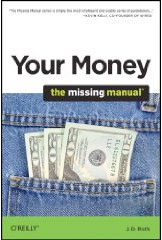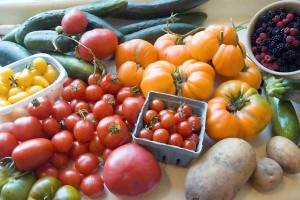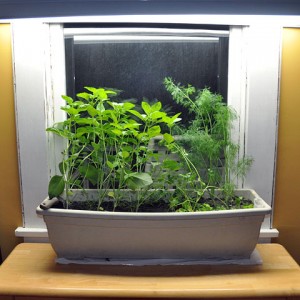This following guest post is an excerpt from Your Money: The Missing Manual by J.D. Roth from Get Rich Slowly:
 Over the past few years, I’ve tried a variety of cost-cutting measures in order to save money. At first, these forays into frugality were a way to help me dig out of debt. After I actually managed to get out of debt, I opted to stay frugal because I saw that doing so would allow me to build wealth — something I never thought I’d be able to do.
Over the past few years, I’ve tried a variety of cost-cutting measures in order to save money. At first, these forays into frugality were a way to help me dig out of debt. After I actually managed to get out of debt, I opted to stay frugal because I saw that doing so would allow me to build wealth — something I never thought I’d be able to do.
Some frugality measures — clipping coupons, buying store brands, using the public library — are clear winners. My wife and I know we save money by doing these things.
But sometimes, it’s not clear if our choices make sense over the long term.
For example, we pool money with friends every year to buy a side of beef. This gets us great quality meat, but there’s no real cost savings. (It’s sort of a break-even proposition.)
We’ve been growing a vegetable garden for nearly 20 years, but my wife and I had always wondered: Do we save money by growing our own food? And if so, how much?
How much does a garden really save?
Many prominent penny pinchers are proud to proclaim that gardening is a great way to save money. Michelle Obama is growing vegetables at the White House. The Burpee seed company boasts that $50 in seeds and fertilizer will yield $1250 in produce. Burpee CEO George Ball told the Wall Street Journal that $1 in seeds will produce $75 worth of beans.
But how much does a garden really save?
My wife and I set out to answer that question during 2008. For twelve months, we tracked the cost of seeds, fertilizer, water, and electricity. We carefully weighed every fruit and vegetable we harvested from our garden, comparing costs with local supermarkets and produce stands. We also logged the time we spent in the garden. At the end of the year, we tallied the results.
We’d spent 60 hours working on our crops and $318.43 on seeds and supplies. We harvested $606.97 worth of food, including:
- $225.74 in berries
- $294.59 in vegetables
- $66.63 in fruit
- $20.10 in herbs
Drawing on what we’d learned, we repeated the experiment in 2009. This time, we spent $351.37 (and 63.5 hours) while harvesting $809.74 worth of food. Can $50 worth of seeds and fertilizer really give you $1250 in food? Well, not in our yard. Still, we were able to double our investment in just a year. T’s a better return than I get with my mutual funds — and it’s tastier, too.

An Actual Weekend Harvest from August 2006
Greens from the garden
Growing your own food is a fun and rewarding way to save money. Food fresh from your yard is convenient and generally tastes better than anything you can find in the supermarket. If you’re able to put in the time and effort, you’ll be rewarded with a bounty of fruit, berries, and vegetables. Here are some quick tips for starting your own garden plot:
- Plan in advance. Decide what you’d like to grow. How much space can you devote to the project? How much time are you willing to spend? For those with small spaces (or small ambitions), a container garden is an excellent choice. Others might consider building raised beds to use for square-foot gardening. Square-foot gardening allows you to maximize food production in a minimum of space.
- Start small. When planning your garden, it’s better to start too small than to start too large. In order to enjoy your garden, you have to be able to control it. Don’t be too ambitious. If you want to test the waters, try herbs. Herbs are easy to grow and they’re cost-effective.
- Choose productive plants. It’s frustrating to plant a bunch of seeds that don’t produce. If you want a rewarding, productive garden, do some research to find out what grows well in your area. One excellent resource is your state’s extension office, but also ask your friends and neighbors.
- Share with others. When you buy a packet of seeds, you’ll generally receive more than you need. It can be fun and frugal to split the costs with others. It’s also useful to share equipment. You may own a roto-tiller while your neighbor has a trailer for hauling manure. Sharing saves money.
- Buy quality tools. When you buy tools, it pays to purchase quality. Thrift and frugality are about obtaining value for your dollar – not just paying the lowest price. Garden tools take years of abuse. You want equipment that will last and that will also be a pleasure to use.
- Have fun. Don’t make gardening more work than it needs to be. Your garden doesn’t need to be perfect. Pick a favorite fruit or vegetable, plant a few seeds, and have fun watching them grow to maturity. Make it a family thing. If you’re a beginning gardener, start small. It’s easy to dive in headfirst and be overwhelmed. Research the plants you want to grow and the conditions they require, build a manageable raised bed if you’re starting from scratch, and use local resources to gain knowledge and cut costs. Build on your successes.

Herbs Grown in an Indoor Container
Your public library will have many great gardening books, some tailored to your location. Two excellent books for new gardeners are Square-Foot Gardening by Mel Bartholomew and The Bountiful Container by McGee and Stuckey. You might also want to check out You Grow Girl, a blog about gardening. With a little bit of effort, your yard can be producing food that tastes great and saves you money!
Have you started working on your garden yet?
J.D. Roth writes about sensible personal finance at Get Rich Slowly. J.D.’s first book, Your Money: The Missing Manual, is now in stores and contains tons of tips for saving (and making) money. To learn more about gardening, check out the Get Rich Slowly articles about starting seeds indoors and how to start your own vegetable garden.


Julie Magro
The value you weren’t able to calculate is the health benefit from eating fresh food free of processing. I believe most people probably save in medical costs too!
Jenn
He & his wife must plant a gigantic garden to spend that much money!! I guess I haven’t figured up the cost for watering, but I can’t imagine that it costs us a ton. I spend, at the most, $30/year for planting my garden (including a few bags of soil). We easily make up that cost in the summer months. We had to build a garden plot since our yard slopes down, which I think has helped keep weeks to a minimum. After the initial work to get it ready to plant and get things planted, it doesn’t take a lot of time to keep mine going. Granted, it’s not a huge garden. I definitely think there are huge monetary and health benefits to a garden!
Ashlee
I’m so excited to have a potted herb garden this year. I love cooking with herbs, but they can get so expensive at the stores. My Mom buys the plants and they get really big pretty quickly. She is going to split the plants and give me a little part of each. That way it won’t cost me anything. I wish we could have a full garden, but we don’t have a yard, just a patio. Maybe someday.
Renae
I love having a vegetable and fruit garden for several reasons. The produce always tastes better since you are able to let sit on the vine until ripe. I love involving my boys in the process too. My three year old actually eats vegetables straight from the garden! I have a harder time trying to get him to eat store bought vegetables. Plus I like the fact that we can grow an organic garden.
My garden does cost us a bit more since we have clay soil. We have to make raised beds and bring in top soil for the best results. It is still well worth it though!
heather
What are all your expenditures that would total upwards of $300 every year?? We built raised beds, using Square Foot Gardening methods, and I’ll admit the first year was expensive for material for the beds and soil, but after that….A quick scan of my water bills showed no real change from “pre-garden”. and there is always the option of using a rain-barrel for ‘free’ water. All i need is some compost and seeds every year…I’d say $50 tops. Either way, we are all doing a great thing…eating REAL food and teaching our children where food comes from!!
Crystal
We don’t spend anywhere near that much, and the satisfaction of working and growing your OWN real food is worth way more than can be measured IMHO.
Jen
I agree with Heather. I too am growing in a Square foot garden sort of way. I changed one bed back to the “normal” method (non-raised bed) to save on soil. I usually lose a small amount of soil when pulling old plants so that would have to had been replaced. I just reused the soil from the garden bed I moved, and bought some kelp food. That should feed the soil again. If you buy heirloom seeds to begin with, you can save the seeds for next year avoiding the cost of more seeds the next year. A dollar a package adds up! So yes I agree, it doesn’t cost NEARLY as much as they are saying and I am sure I reap more money than he was saying. I grow strawberries. At $2.50 a pint, I am going to REALLY “make some money” by not buying them at the store. Not to mention my blueberry bushes. I dont buy blueberries at the store because they are soooo expensive.
jw
I’m wondering what prices you are using to calculate the value of the food you’re producing (loss leaders? regular priced fruits and vegetables? sale prices?)…I’ve always wanted to have the time to try it, too, but have found that the time involved; lost produce to bad weather/bugs, etc and opportunity to buy only what I need at a good sale price at a market outweigh the effort needed for a few months of a growing season…not to mention the variety I can get at a store that I could never grow myself…
Jenn
I have a smaller garden–maybe 10′ x 20′. Honestly after the initial Saturday it takes to get the garden ready and planted, it does not take that much of my time–just 10-20 min. every day. I don’t have room to do all that I want, but even with what I am able to plant (tomatoes, zucchini, peppers, green onions, green beans, lettuce & spinach), it definitely saves us money. I’ve only been doing this for a few years, but I haven’t had the weather or animals ruin anything. And it’s so easy to freeze extras and pull them out in the winter when prices are high (even on sale) or certain produce is scarce. Just my opinion:)
Ruth
We also use the square foot garden method. Our start up cost to build a 4 foot by 24 foot garden was about $170– this included all of the organic compost, organic peat, vermiculite, and 40 varieties of organic seed. We live in Michigan so the season is not super long, but by following the method and instructions you are able to use all 64 square feet and replant 2-3 times a year– I’ve got 4 kids and that garden produced enough to feed my family plus MANY others and we were able to also donate a lot to local food banks and shelters and also can and freeze a TON! I am SUPER excited because I got 12 of the topsy turvy growers last fall on clearance at CVS for 1.22 each, so this year all of our peppers, cucumbers, 3 varieties of tomatoes, squash, and zucchini will be hung using TONS less space and producing even more. The best part of about square foot gardening is it is easy 100% organic– but following tips like planting marigolds here and there you avoid almost all bugs, and you NEVER (yes that is right) NEVER have to weed… we spent about 4 hours building, prepping, and weeding the garden and about an hour keeping it up and watering a week throughout the season– about an hour every 8 weeks or so harvesting and replanting… and a whole years worth of amazing, good food. How the guy who wrote this spent over $300 on his garden I have no idea… but maybe others can think about using the square foot method to spend less time and money and make gardening even more worthwhile and profitable. Instead of donating or giving away excess you can also sell at a farmers market… the possibilities are endless! :)
amber pifer
This is so timely for me, I’m just about to start my first veggie garden. It’s for the joy of it, but also hopefully to save some money. But I was wondering if it was just wishful thinking that it woudl truly save money. I am feeling good about that now, esp. if I learn to freeze and can. THanks!
J.D.
Hey, everyone. Thanks for the comments. Regarding the costs: The original articles at Get Rich Slowly track every expense in detail, though I can’t remember everything here, two years later, of course. The water isn’t the biggest expense. In general, the biggest expenses come from tools and implements. Obviously, most of these are one-time expenses, and so costs will be lower in the future. Other big expenses include fruit trees and fertilizer and so on. It’s absolutely possible to spend much less on a garden, especially if you already own the “infrastructure”, or if you decide to improvise instead.
Gardening is a fun and fruitful hobby, and I encourage everyone to give it a try! :)
kara dawson
I have had a large garden for going on 5 years this year! It is wonderful to grow your own food and involve the whole family is picking seed, tilling, planting, watering and watching everything grow…and weeding! I enjoy every veggie I get from the garden. I can not compare the cost, no matter what it is…the taste of a home grown veggie far surpasses any veggie from the grocery store. Home grown tomatoes can not be duplicated!!!
moira
the 60 hours of labor could be written off as 60 hours of fun and exercise. have you seen the guys of “truck farm”? very sweet. they plant everything in the back of a dodge ram. the way i see it, anything you can get outside of north america’s industrial food chain, no matter what the upfront cost (or savings), is good for your physical, mental and emotional health, good for your community and good for the planet. thanks for sharing this!
Janel
Great post. Thanks for the tips. I’ve always wondered about the cost effectiveness of gardening. It also helps kids learn to work and contribute regularly to something that will not produce immediately, but will be well worth it when it does.
mediere pro
I like the valuable info you supply in your articles. I will bookmark your blog and check again right here frequently.
I am moderately sure I will be told lots of new stuff right here!
Good luck for the following!